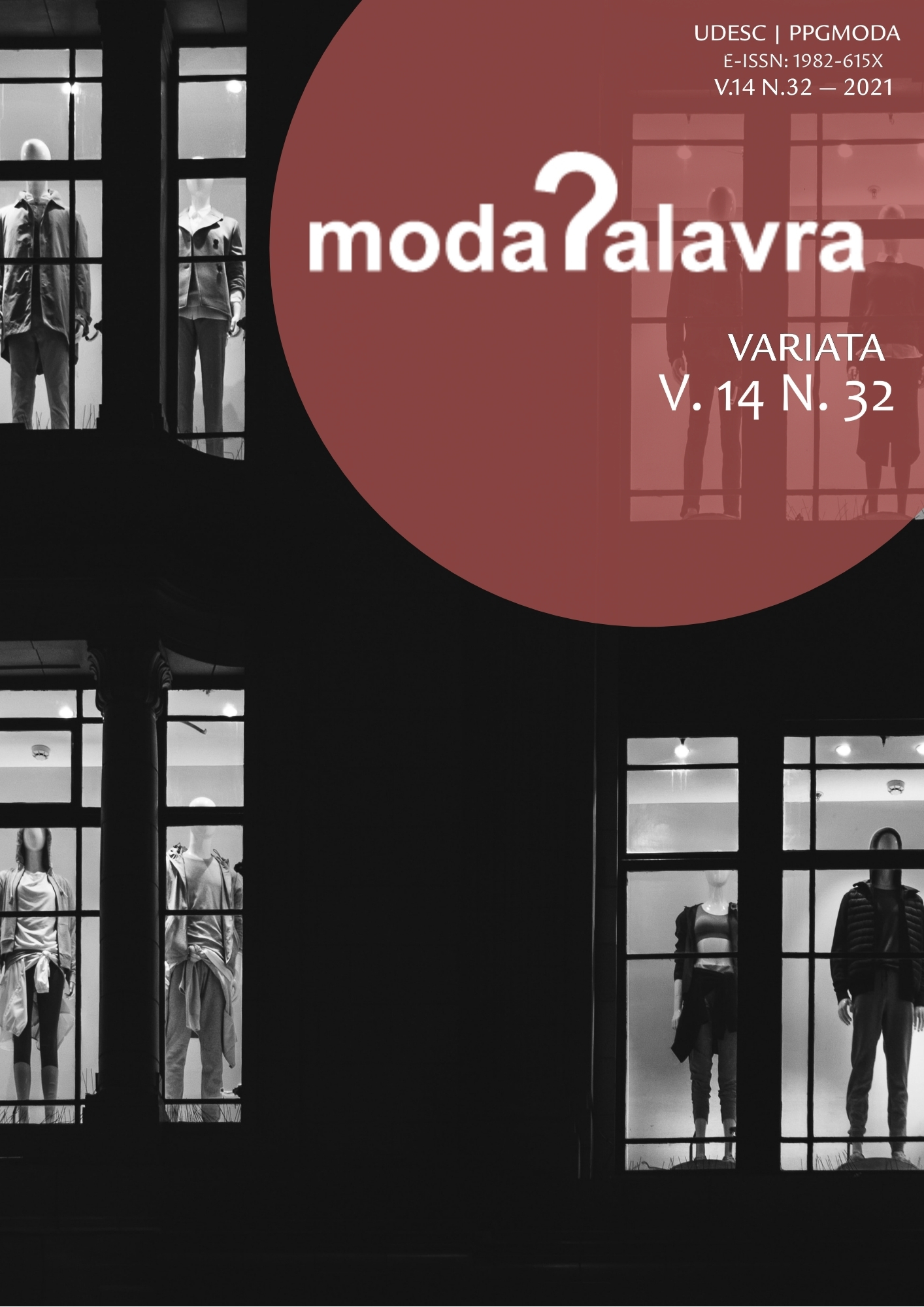Research on socio-cultural and consumer trends as a new methodological perspective for the advertising profession
DOI:
https://doi.org/10.5965/1982615x14322021010Keywords:
consumption, innovation, brands, communication strategie, trendsAbstract
Since the 1980s, investigative interest and advances in the field of socio-cultural and consumer trends have been growing internationally. But, so far, there is neither a methodology nor a body of research techniques established for such an activity. It is for this reason that we defend the establishment and consensus of a methodology together with a set of well-structured investigative techniques for the development of trend research. This article presents the content analysis and, later, a comparative study of the methods and techniques used until today by the main observatories of Brazilian and Spanish trends. It is also a study of the consumer sectors in which this activity is carried out and the disciplines that serve it. I study that we are beginning to extend EE. UU, United Kingdom, France, Italy and Japan. It is undoubtedly an unprecedented contribution that will lead to the establishment of the investigation of socio-cultural and consumer trends, as an essential tool within the discipline of communication.
Downloads
References
BOX 1824. Disponível em: http://www.box1824.com.br. Acesso em: 10 jul. 2015.
CALDAS, Dario. Observatório de sinais: teoria e prática da pesquisa de tendências. São Paulo: Senac, 2014.
CÓRDOBA-MENDIOLA, Daniel. Coolhunting: Cazar y gestionar as tendencias que mueven el mundo. Barcelona: Gestión 2000, 2009.
COSKUNER-BALLI, Gokcen; SANDIKCI, Özlem. The aura of new goods: how consumers mediate newness. Journal Of Consumer Behaviour, [s.l.], v. 13, n. 2, p. 122-130, mar. 2014. Disponível em: https://doi.org/10.1002/cb.1470. Acesso em: 7 mar. 2023.
FLOCH, Jean-Marie. Sémiotique, marketing e comunicação. Sous les signes, les stratégies. Paris: Presses Universitaires de France, 1990.
HIGHMAN, William. A próxima grande coisa: identificar e prever tendências de consumo para lucro. Reino Unido: Página de Kogan, 2009.
INOVA CONSULTING. Disponível em: http://www.inovaconsulting.com.br. Acesso em: 10 jul. 2016.
KUO-experiência. Disponível em: http://www.kuo-experience.es. Acesso em: 20 ago. 2016.
LABORATÓRIO DE TENDÊNCIA BARCELONA. Disponível em: http://www.trendslabbarcelona.com. Acesso em: 30 ago. 2016.
LA ROCHA. Disponível em: http://www.larock.marketing. Acesso em: 10 ago. 2016.
NETHUNTING. Disponível em: http://www.nethunting.es. Acesso em: 17 ago. 2016.
OBSERVATORIO DE SINAIS. Disponível em: http://observatoriodesinais.com.br. Acesso em: 10 jul. 2016.
OBSERVATORIO DE TENDENCIAS DEL HÁBITAT. Disponível em: http://www.tendenciashabitat.es. Acesso em: 10 ago. 2016.
PENN, Mark J. Microtrends: as pequenas forças por trás das grandes mudanças de amanhã. Nova York: Hachette Book Group, 2007.
PEREZ, C. et al. Alvo y tendencias de consumo en la contemporaneidad: Perspectivas teóricas para entender nuevos sentidos. In: Anais do 10º Congresso Mundial da Associação Internacional de Estudos Semióticos(IASS/AIS), Universidade da Corunha, España, p. 1077–1086, 2012.
PÉREZ, P.; SOLANAS, I. Incidencia de los estilos de vida en la publicidad y el marketing. Trípodos, [s. l.], n. 18, p. 123-138, 2006.
Rede Global de Estilo Mundial. Disponível em:www.wgsn.com. Acesso em: 21 jul. 2016.
SEMPRINI, Andrea. A Marca Pós-Moderna: Poder e Fragilidade da Marca na Sociedade Contemporânea. São Paulo: Estação das Letras, 2006.
SURGENIA. Disponível em: http://www.surgenia.es. Acesso em: 30 ago. 2016.
VAN STEENBURG, Eric; SPEARS, Nancy; FABRIZE, Robert O.. Point of purchase or point of frustration? Consumer frustration tendencies and response in a retail setting. Journal of Consumer Behaviour, [s.l.], v. 12, n. 5, p. 389-400, set. 2013. Disponível em: https://doi.org/10.1002/cb.1440. Acesso em: 7 mar. 2023.
VEJLGAARD, Henrik. Anatomia de uma tendência. Nova York: McGraw-Hill, 2013.
Downloads
Published
How to Cite
Issue
Section
License
Copyright (c) 2021 María López Vilar, Pedro A. Hellín Ortuño

This work is licensed under a Creative Commons Attribution-NonCommercial 4.0 International License.
When submitting an article for publication in ModaPalavra e-periodico, the author (s) agree (s) with the following terms:
- Authors maintain the copyright in their manuscripts and grant the journal the right of first publication, with work simultaneously licensed under the Creative Commons Attribution-NonCommercial 4.0 International, which allows sharing the work with the acknowledgment of authorship and the initial publication in the journal without payment ;
- Authors may use the same results in other publications after the first publication, provided that they indicate ModaPalavra e-journal as the original publication medium;
- Authors are authorized to take additional contracts, separately, only after the original publication in ModaPalavra e-journal, provided they indicate ModaPalavra e-journal as the original publication medium;
- Authors are allowed and encouraged to publish and distribute their work online (eg in institutional repositories or on their personal page), only after the editorial process and the first publication, provided they indicate ModaPalavra e-journal as the original publication medium;
- To indicate ModaPalavra e-journal as the original publication medium, authors should use the following text template: "This article was originally published by ModaPalavra e-periodical, under a CC BY NC license, in its volume [insert volume] number [insert number] in the year of [insert year], and can be accessed at: http://www.revistas.udesc.br/index.php/modapalavra/ ";
- The opinions expressed in the articles are the author’s sole responsibility, not necessarily reflecting the journal’s opinion. The publication of any material that is owned and held in copyright by a third party, including – but not limited to - articles, photos or drawings was previously authorized by their representatives to be published in ModaPalavra e-journal.









